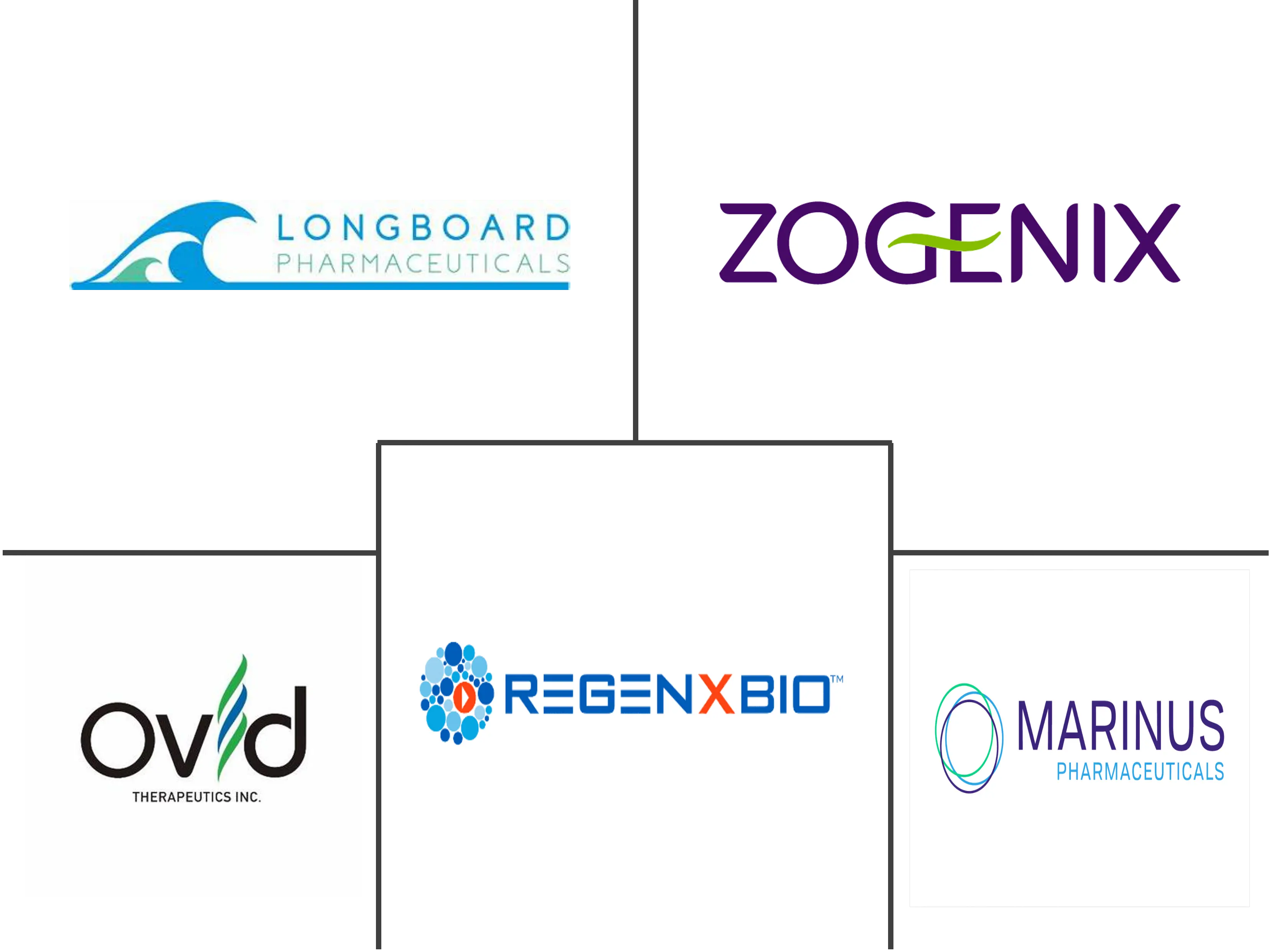Global CDKL5 Deficiency Disorder (CDD) Market Size and Share
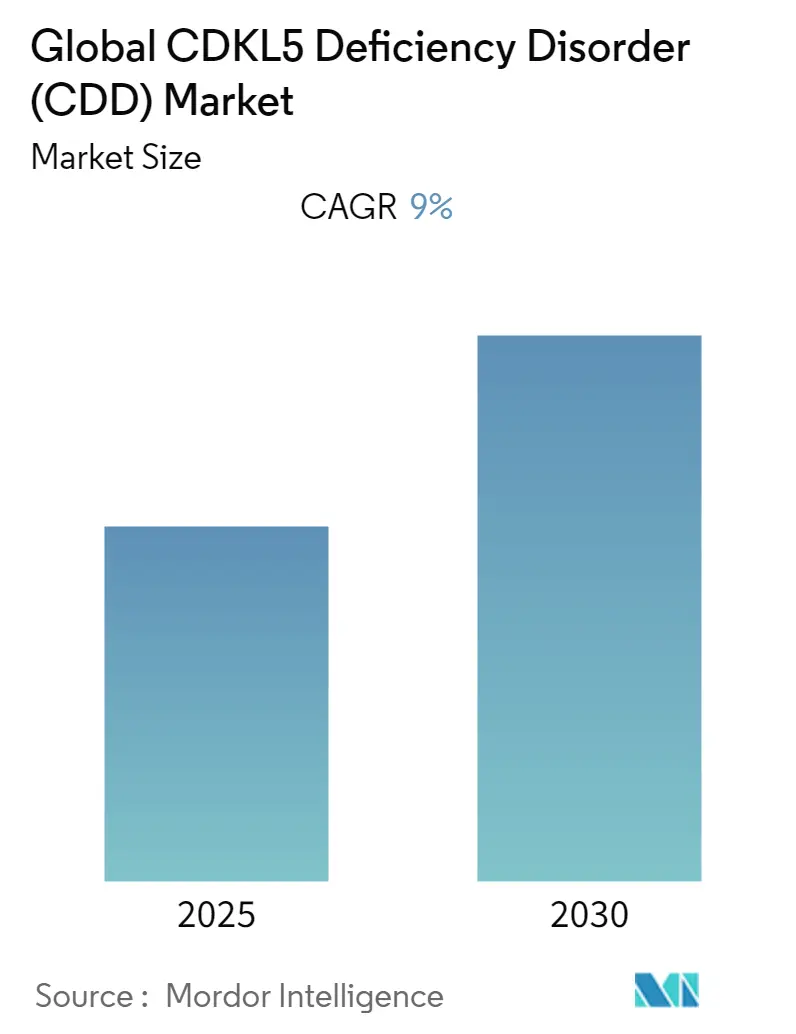
Global CDKL5 Deficiency Disorder (CDD) Market Analysis by Mordor Intelligence
The Global CDKL5 Deficiency Disorder Market is expected to register a CAGR of 9% during the forecast period.
With the increasing COVID-19 cases worldwide, healthcare services diverted all resources toward patients suffering from COVID-19 disease. Although COVID-19 severely affects the respiratory system, it has been reported to show effects on central and peripheral systems. These included encephalopathy, inflammation, ischaemic stroke, and peripheral neurological disorders. An article titled 'Epilepsy and COVID-19: Assumptions and Important Considerations' published in July 2020 stated that the Centers for Disease Control and Prevention (CDC) had suggested that neurological comorbidities, including epilepsy, may be risk factors for COVID-19, despite a lack of evidence. However, this statement was later removed from the Centers for Disease Control and Prevention (CDC) website. According to the article titled 'Epilepsy and COVID-19: Updated Evidence and Narravative Review' published in March 2021, active epilepsy would be an independent risk factor for both the incidence and mortality of COVID-19. In that study, active epilepsy was associated with a 5.1-fold greater odds ratio of mortality risk. Additionally, clinical trials on repurposing the epileptic drug for COVID-19 may have minimal impact on the CNS therapeutics market.
With the introduction of more sophisticated genetic testing, CDKL5 disorder is now being diagnosed in children at a relatively early age. Genetic testing prior, which sequenced the gene, would not necessarily have picked up deletions. Several individuals subsequently diagnosed with CDKL5 disorder were previously given a negative result. Therefore, a child with the phenotype who has previously tested negative, yet does not have a genetic diagnosis, should be re-tested to include deletion and duplication testing of the CDKL5 gene. As per CDKL5 Research Collaborative, there are estimated to be several thousand cases worldwide, but that number frequently changes as improved genetic testing has evolved and population studies are undertaken.
The diagnosis is based on a simple blood test. More recently, some labs have used a buccal swab of the cheek. The blood or saliva swab is then sent to a special laboratory that performs the genetic test. Recently, CDKL5 testing has become widely available in epilepsy and developmental delay genetic panels, thereby allowing testing of multiple potential disease-causing genes all at the same time at a cost similar to just testing the CDKL5 gene alone. Therefore, the improved diagnosis will lead to an increased patient population, and patients will further seek treatment for the disease. In addition, the molecular biology of CDD is revealing opportunities in precision therapy, with phase II and III clinical trials underway or planned to assess disease-specific and disease-modifying treatments.
In the last few decades, CDD research has seen great progress, with more researchers now studying the causes, diagnosis, and treatment of CDD at many medical centers, university hospitals, and other institutions. There has been a dramatic increase in much-needed research, including ongoing clinical investigations for future therapies. Additionally, several organizations, such as the International Foundation for CDKL5 Research, CDKL5 Research Collaborative, CDKL5 alliance, CDKL5 UK, Loulou Foundation (UK), CDKL5 Alliance Francophone, along with several pharmaceutical companies, have been working in a positive direction for better treatment alternatives in the market. For instance, in October 2021, The Loulou Foundation, a private foundation dedicated to the development of therapeutics for the neurodevelopmental condition CDKL5 Deficiency Disorder (CDD), announced today that seven biopharmaceutical industry partners together with the Loulou Foundation had formed a pre-competitive consortium to direct a key clinical study for the development of disease-modifying therapeutics for CDD. The seven companies are Amicus Therapeutics; Biogen Inc.; Elaaj Bio; Marinus Pharmaceuticals Inc.; PTC Therapeutics; Ultragenyx Pharmaceutical Inc.; and Zogenix, Inc. Also, several agents with novel mechanisms of action are keenly being reconnoitered in ongoing clinical trials. Similarly, an initiative from several other countries is providing comprehensive and relevant health information related to various health-related problems, including CDD. Such collective and increasing awareness programs help patients to know about the disease and available safe treatment options, which are expected to drive the market growth of CDD.
Global CDKL5 Deficiency Disorder (CDD) Market Trends and Insights
The First Line Treatment Segment is Expected to Hold a Major Market Share in the CDKL5 deficiency disorder Market
The first-line treatment segment is expected to hold a significant market share over the forecast period. Seizures are a big problem in CDKL5. The majority of affected children start having them within the first few weeks or months of life. Their pattern often changes and evolves with age. In many cases, seizure control proves difficult to maintain with conventional anti-epileptic drugs or other types of treatment.
Treatment for neurologic features of CDKL5 deficiency disorder is symptom-based and empiric rather than CDKL5 deficiency disorder-specific, though clinical trials for CDKL5 deficiency disorder are emerging. Traditional drugs are the first line of treatment for CDKL deficiency disorder. They include valproate and stiripentol. These drugs help in controlling seizures and improve cognitive function. In 2022, ganaxolone (Ztalmy) was approved to treat seizures associated with CDKL5 deficiency disorder in patients two years of age and older. This is the first treatment for seizures associated with CDKL5 deficiency disorder and the first treatment specifically for CDKL5 deficiency disorder. As per the article titled ' Current Neurologic Treatment and Emerging Therapies in CDKL5 Deficiency Disorder' published in September 2021, the most commonly used anti-seizure medications in CDD were a broad spectrum, including clobazam, valproate, topiramate, levetiracetam, and vigabatrin, and 29.6% of individuals were treated with steroids or Adrenocorticotropic hormone.
Thus the above-mentioned factors are expected to drive the growth of the studied segment during the forecast period.
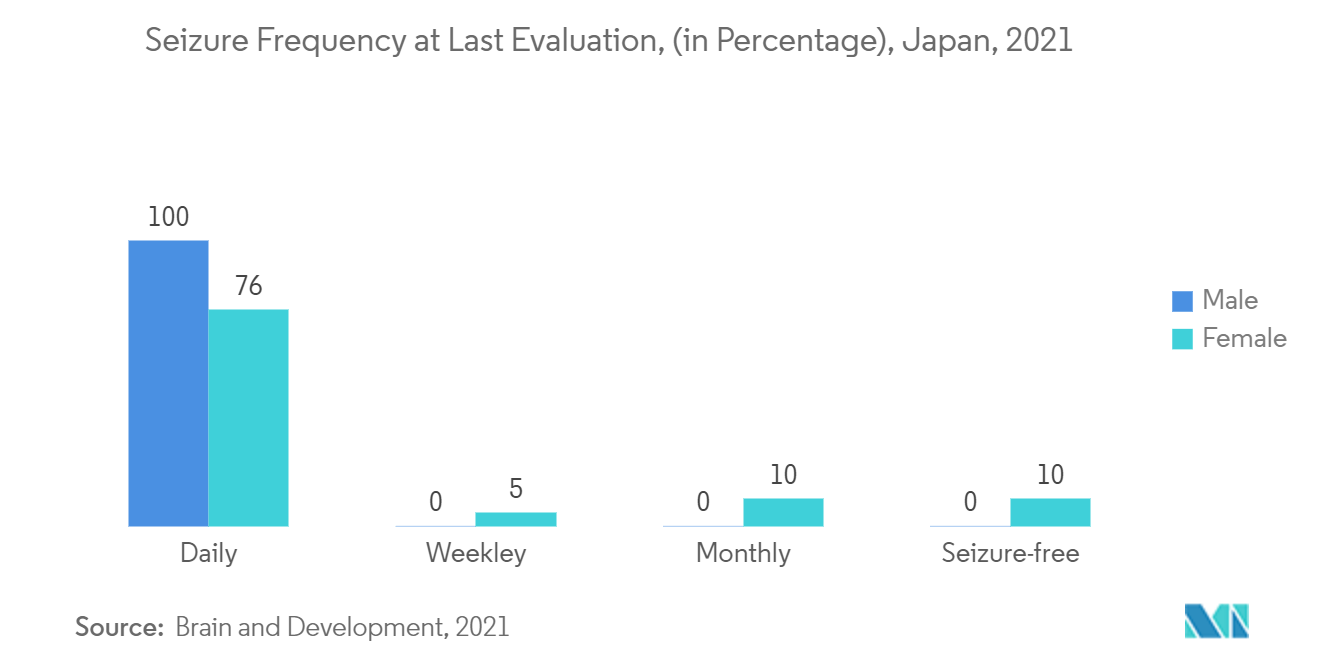
North America is expected to Hold a Significant Share in the Market and is expected to do the same in the Forecast Period.
North America is expected to hold a major market share in the global CDKL5 deficiency disorder market due to the rise in the prevalence of CDKL5 deficiency disorder in this region also the increased awareness of neurological diseases. The International Foundation for CDKL5 Research has eight CDKL5 Centers of Excellence in the United States - more than any other country in the world. The centers are the driving force that establishes and maintains these Centers of Excellence. According to The Orphan Disease Center in 2021, the CDKL5 gene is present on the X chromosome; most described CDKL5 patients are females (>80%), whereas boys with CDKL5 deficiency tend to show more severe symptoms. The seizures associated with CDKL5 are largely resistant to control with current anti-epileptic drugs. Approximately 1,500 patients have been diagnosed with CDKL5 deficiency globally. The prevalence is likely higher due to mis- and un-diagnosed cases.
Moreover, the United States is the most affected country across the world, as there are higher numbers of patients suffering from CDKL5 deficiency disorder and higher in the North American region as the patient population is increasing compared to other countries. For instance, as per the report published by Loulou Foundation International Foundation for CDKL5 Research in 2020, current estimates of prevalence at one referral center in the United States suggest that CDKL5 deficiency may be found in about one in 75,000, representing less than 4,500 individuals with CDKL5 deficiency in the United States.
In addition, high expenditure on healthcare and genetic testing, especially in the United States and Canada, along with increased awareness about the disease, is fueling the growth of the overall regional Market to a large extent.
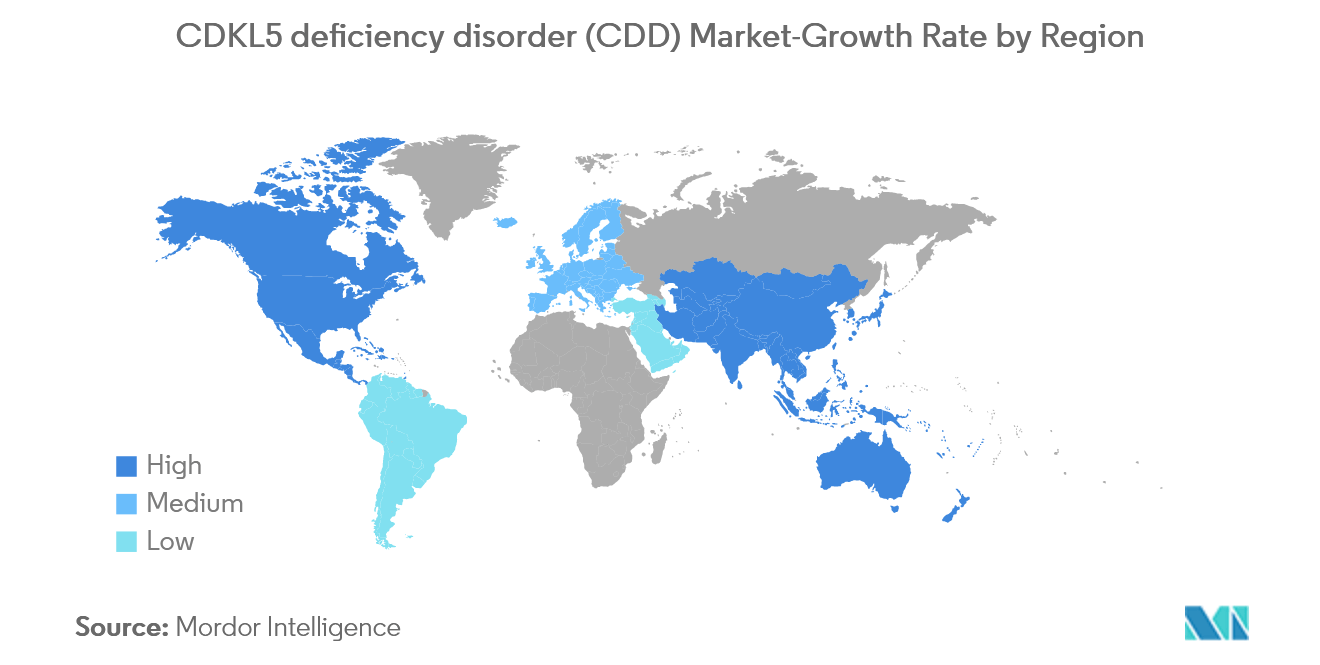
Competitive Landscape
The CDKL5 deficiency disorder market is fragmented and competitive and consists of several major players. In terms of market share, a few of the major players are currently dominating the market. Some of the companies which are currently dominating the market are Marinus Pharmaceuticals, Zogenix, REGENXBIO, Longboard Pharmaceuticals, Ovid Therapeutics, Vyant Bio, and others.
Global CDKL5 Deficiency Disorder (CDD) Industry Leaders
-
Marinus Pharmaceuticals
-
Zogenix
-
REGENXBIO
-
Longboard Pharmaceuticals
-
Ovid Therapeutics
- *Disclaimer: Major Players sorted in no particular order
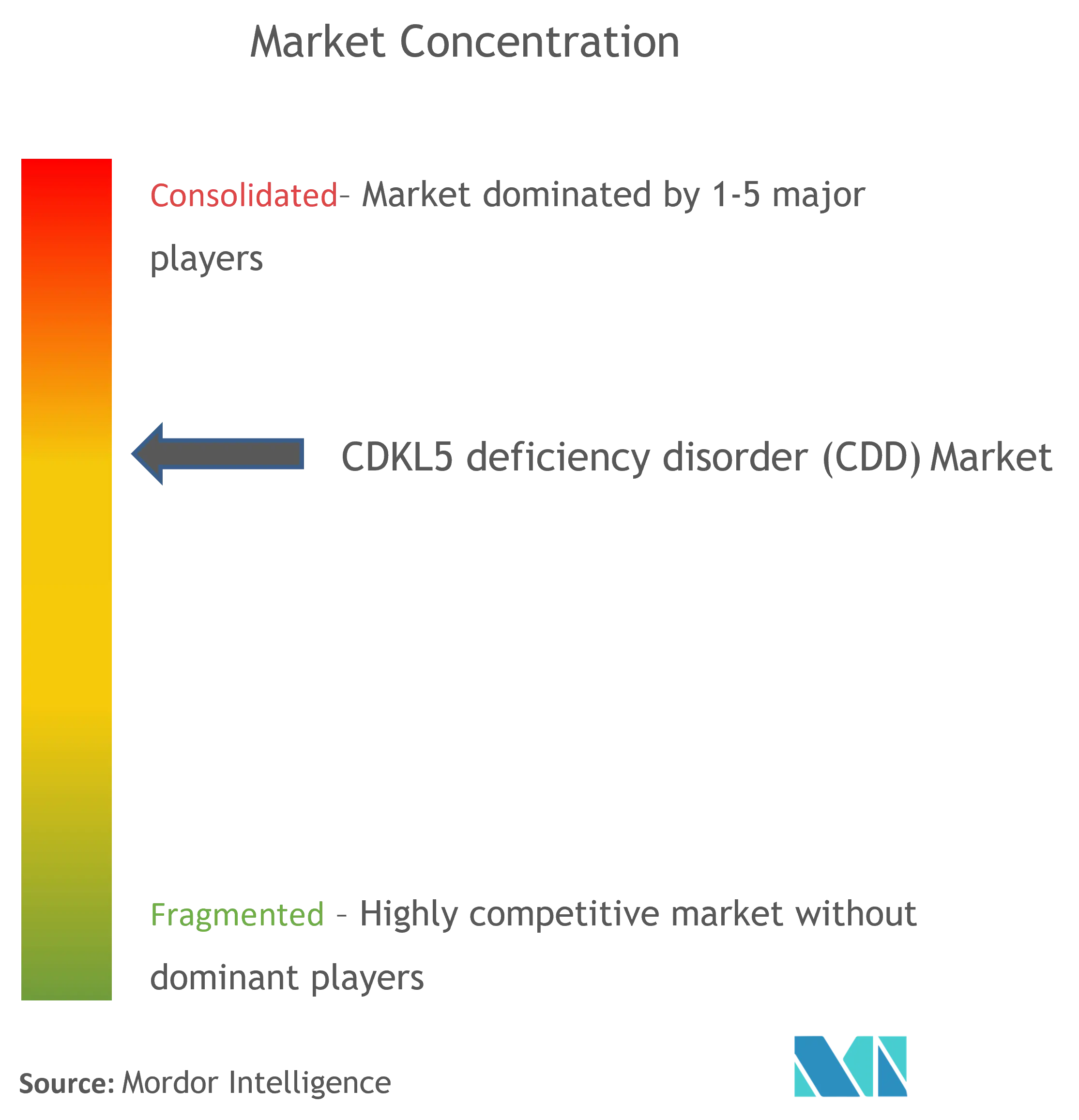
Recent Industry Developments
- In July 2022 Marinus Pharmaceuticals commercially launched the ganaxolone, oral suspension in the United States for the treatment of seizures associated with CDJL5 deficiency disorder in patients 2 years of age and older.
- In March 2022, the Food and Drug Administration (FDA) approved ganaxolone by Ztalmy; Marinus Pharmaceuticals for the treatment of seizures associated with cyclin-dependent kinase-like 5 (CDKL5) deficiency disorder, also known as CDD, in patients aged two years and older.
Global CDKL5 Deficiency Disorder (CDD) Market Report Scope
As per the scope of this report, CDKL5 (cyclin-dependent kinase-like 5) deficiency disorder is a rare neurodevelopmental condition caused by pathogenic variants in the CDKL5 gene. The disorder can cause a wide range of symptoms with varying severity. CDKL5 deficiency disorder (CDD) market is segmented by Therapies (First line of therapies, Second line of therapy), By Distribution Channels (Hospital Pharmacies, Retail Pharmacies, and others), and Geography (North America, Europe, Asia-Pacific, Middle-East and Africa, and South America). The report offers the value (in USD million) for the above segments.
| First Line of Therapy (Antiepileptic Drugs and Anticonvulsants) |
| Second Line of Therapy |
| Hospital Pharmacies |
| Retail Pharmacies |
| Others |
| North America |
| Europe |
| Asia-Pacific |
| Middle-East and Africa |
| South America |
| By Therapies | First Line of Therapy (Antiepileptic Drugs and Anticonvulsants) |
| Second Line of Therapy | |
| By Distribution Channel | Hospital Pharmacies |
| Retail Pharmacies | |
| Others | |
| Geography | North America |
| Europe | |
| Asia-Pacific | |
| Middle-East and Africa | |
| South America |
Key Questions Answered in the Report
What is the current Global CDKL5 Deficiency Disorder (CDD) Market size?
The Global CDKL5 Deficiency Disorder (CDD) Market is projected to register a CAGR of 9% during the forecast period (2025-2030)
Who are the key players in Global CDKL5 Deficiency Disorder (CDD) Market?
Marinus Pharmaceuticals, Zogenix, REGENXBIO, Longboard Pharmaceuticals and Ovid Therapeutics are the major companies operating in the Global CDKL5 Deficiency Disorder (CDD) Market.
Which is the fastest growing region in Global CDKL5 Deficiency Disorder (CDD) Market?
Asia-Pacific is estimated to grow at the highest CAGR over the forecast period (2025-2030).
Which region has the biggest share in Global CDKL5 Deficiency Disorder (CDD) Market?
In 2025, the North America accounts for the largest market share in Global CDKL5 Deficiency Disorder (CDD) Market.
What years does this Global CDKL5 Deficiency Disorder (CDD) Market cover?
The report covers the Global CDKL5 Deficiency Disorder (CDD) Market historical market size for years: 2019, 2020, 2021, 2022, 2023 and 2024. The report also forecasts the Global CDKL5 Deficiency Disorder (CDD) Market size for years: 2025, 2026, 2027, 2028, 2029 and 2030.
Page last updated on:
Global CDKL5 Deficiency Disorder (CDD) Market Report
Statistics for the 2025 Global CDKL5 Deficiency Disorder (CDD) market share, size and revenue growth rate, created by Mordor Intelligence™ Industry Reports. Global CDKL5 Deficiency Disorder (CDD) analysis includes a market forecast outlook for 2025 to 2030 and historical overview. Get a sample of this industry analysis as a free report PDF download.
